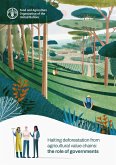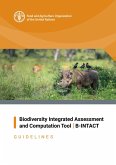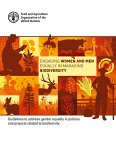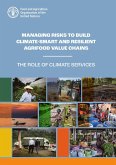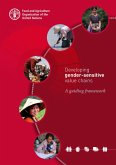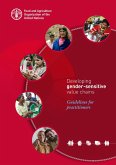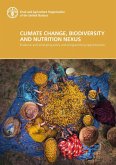The Ex-Ante Carbon-balance Tool for Value Chains (EX-ACT VC) is a quantitative multi-appraisal tool that evaluates the sustainability of agrifood value chains simultaneously along several environmental, economic, and social dimensions. It analyses greenhouse gas (GHG) emissions along an agrifood value chain, from farm-gate-to-shelf, including GHG fluxes from processing and storage, to packaging and transportation; calculates a set of value-added indicators including gross production value, value-added, and net income; and estimates the number and nature of jobs created along the value chain. It also includes an estimation of food loss at each stage of the value chain; an assessment of gender and youth participation and an SDG tracker. The primary objective of EX-ACT VC is to provide decision support to design (ex-ante) and evaluate (ex-post) agrifood VC projects and policies by comparing a 'current' scenario with baseline information and a 'planned' scenario involving a future vision or goal (or implemented activities scenario in case of ex-post evaluations). EX-ACT VC helps users to quantify the sustainability performance of the selected value chain, identify the drivers of sustainability, understand how economic, social, and environmental dimensions are intertwined, and identify potential entry points for environmental and socioeconomic improvements along the selected value chain. The EX-ACT VC methodological guidelines aim at: 1) providing a comprehensive overview of the tool and helping users assess the sustainability of agrifood value chains across environmental, economic, and social dimensions using the tool; 2) describing the various methodological concepts underlying the tool to perform a value chain assessment and calculating several indicators of sustainability; 3) illustrating the structural layout of the tool, explaining data requirements, and providing step-by-step data entry guidance to perform a value chain assessment using EX-ACT VC; 4) discussing the different indicators the tool calculates and how they can be used for project and policy evaluation and design. These guidelines are intended to assist potential users of EX-ACT VC including policymakers, project managers, analysts, and researchers, among others.
Dieser Download kann aus rechtlichen Gründen nur mit Rechnungsadresse in A, B, CY, CZ, D, DK, EW, E, FIN, F, GR, H, IRL, I, LT, L, LR, M, NL, PL, P, R, S, SLO, SK ausgeliefert werden.



